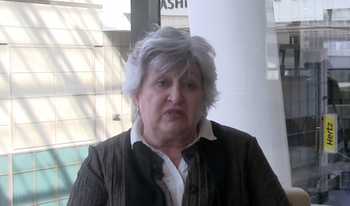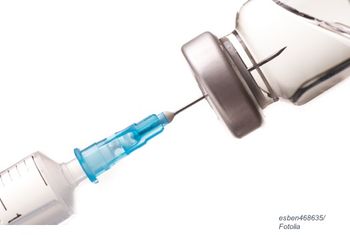
Laura Waters, MD, FRCP, an author on the Nature article on the reported HIV remission of the London Patient, explains why it is too soon to label the remission as a cure.

Laura Waters, MD, FRCP, an author on the Nature article on the reported HIV remission of the London Patient, explains why it is too soon to label the remission as a cure.

In a symposium at CROI 2019, Jean-Michele Molina, MD, presented on PrEP failures, highlighting elements of diagnosis, resistance and treatment.

Monica Gandhi, MD, MPH, discusses antiretroviral options and and treatment decisions for women of reproductive potential.

In a symposium at CROI 2019, Laura Waters, MD, FRCP, presented on the developments of 2-drug regimens for HIV treatments, as well as the questions that remain unanswered.

Paul Sax, MD, shares his take on news of the second person ever achieving long-term HIV remission.

Susan Swindells, MBBS, discusses the ATLAS trial evaluating long-acting intramuscular injections of cabotegravir/rilpivrine in treatment-experienced individuals.

A new study examining tuberculosis and HIV coinfection in patients in Latin America has found that those with TB had higher mortality rates over the course of a decade, despite successful TB treatment.

Lynne Mofenson, MD, spoke to Contagion® in an exclusive interview to explain what the current data suggest on the impact of antiretroviral therapy on maternal health and pregnancy outcomes.

Pietro Vernazza, MD, discusses his presentation on the scientific underpinnings of U=U 11 years after issuing the Swiss Statement

GS-6207’s resistance and pharmacokinetic profile make it a suitable candidate for low-dose, long-acting administration to treat HIV-1 infections, a study finds.

GS-9131, a novel nucleoside reverse transcriptase inhibitor, is a promising antiretroviral candidate for individuals displaying resistance to other NRTIs.

A fast switch to second-line ART after observation of elevated VL or CD4

The opioid overdose death rate for persons living with HIV was 42.7% greater in 2015 than in 2011 even though the total death rate among HIV-diagnosed individuals decreased.

The FLAIR trial evaluated whether a switch to monthly long-acting injectable cabotegravir /rilpivirine is non-inferior to oral dolutegravir/ abacavir /lamivudine in treatment-naive adults.

The ATLAS trial evaluated whether a switch to monthly long-acting injectable cabotegravir/rilpivirine is non-inferior to continued 3-drug oral antiretroviral therapy in virologically suppressed adults.

Ava Avalos, MD, discusses the "encouraging" 12-month outcomes from the Botswana Beat Cohort study, which employs a dolutegravir-based regimen.

Saye Khoo, MD, lead presenter of DOLPHIN-2, explains the details of the research on the differences between efavirenz regimen and dolutegravir when initatied during the third trimester of pregnancy.

A study reports that weight gain in individuals on ART was associated with lower BMI, reduced proportion of hypogonadism, increased proportion of psychiatric disorders, and non-PI-containing regimens.

A study characterizes the genotypic profile and the phenotypic susceptibility to temsavir in patients with multidrug resistant HIV who could be candidates for fostemsavir.

Investigators report 12-month outcomes from the Botswana Epidemiological ART Treatment Cohort Study (BEAT), an observational research cohort tracking virologic and clinical outcomes of people living with HIV who are beginning dolutegravir-based regimens.

Using EHR data, a study team identified 6076 potential PrEP candidates in a large health system, of whom 5577 (92%) were not on PrEP at the time.

PrEP use in persons with undetected HIV infections contributes to drug resistance and has investigators urging regular screening.

HIV incidence rates in MSM and transgender women taking F/TAF or F/TDF were found to be very low and significantly less than the rate in at-risk individuals not on PrEP in the US.

Paul Drain, MD, MPH, discusses the results of a study evaluating point-of-care viral load testing and discusses the advantages to implementation.

Following FDA approval of a single-tablet bictegravir, emtricitabine, and tenofovir alafenamide regimen for use in adults with HIV, investigators are exploring the safety and efficacy of the same therapy in children and adolescents aged 6 to 18 years.

Weight gain is often a concern for patients on ART. But what about the metabolic impact of PrEP on HIV-uninfected individuals?

DOLPHIN-2 reports that dolutegravir is well-tolerated and achieves more rapid virological suppression prior to delivery compared to efavirenz when initiated during pregnancy.

Bacterial sexually transmitted infections are still prevalent among men who have sex with men in England, but PrEP and other measures have sharply cut the rate of new HIV diagnoses.

A trial comparing raltegravir with efavirenz for antiretroviral therapy in treatment naïve pregnant women with HIV supports the use of raltegravir, especially for women starting ART later in gestation.

Anthony Fauci, MD, director of the National Institute of Allergy and Infectious Diseases, has been fighting HIV/AIDS since the 1980s when the virus was first discovered. Now, thanks to a joint effort by multiple arms of the US Department of Health and Human Services, he’s making headway.